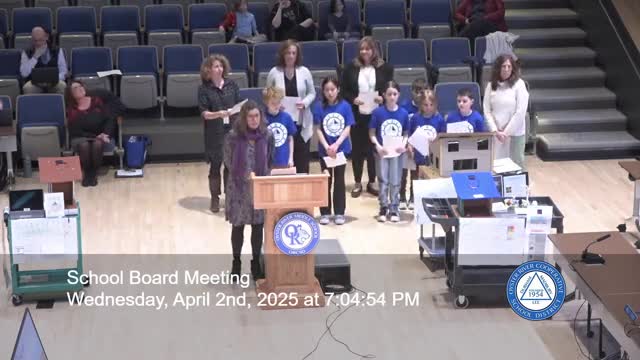Fourth graders showcase energy efficient tiny homes project on sustainable design
April 10, 2025 | Oyster River Coop School District, School Districts, New Hampshire
Thanks to Scribe from Workplace AI , all articles about New Hampshire are free for you to enjoy throughout 2025!

This article was created by AI using a video recording of the meeting. It summarizes the key points discussed, but for full details and context, please refer to the video of the full meeting. Link to Full Meeting
The presentation began with an overview of the project, which integrated various subjects, including science, mathematics, and social-emotional learning. Fourth-grade teacher Erin Bobo Karen explained that the primary goal was to engage students through project-based learning, allowing them to work in design teams to create models of tiny homes featuring sustainable energy solutions. The project employed five best teaching practices, including hands-on experimentation and the involvement of community experts.
Joanne Uhlberg, another fourth-grade teacher, detailed the hands-on experiments that students conducted to understand energy concepts. Students explored kinetic and potential energy through activities like building Rube Goldberg machines and creating electrical circuits. This experiential learning approach fostered a deeper understanding of energy transfer, as evidenced by students' ability to articulate their findings during the presentation.
Students like Vermette and Katie shared their personal experiences with experiments, demonstrating how they learned about energy through practical applications. They described how they observed energy transfer in action and built circuits, reinforcing their understanding of electrical energy.
The project also included visits from experts, such as Angie Krzyzak from the New Hampshire Energy Education Project, who provided demonstrations on electricity generation. This interaction enriched the students' learning experience and sparked discussions about renewable versus nonrenewable energy sources.
As the project progressed, students engaged in reading activities that supported their understanding of energy concepts, including the motivational novel "The Boy Who Harnessed the Wind." This literary component complemented their hands-on work and helped them document their learning in science journals.
The culmination of the project involved students designing and building their tiny homes, where they applied their knowledge of sustainable features. They created team contracts to establish roles and responsibilities, fostering collaboration and problem-solving skills. The use of technology was also integral, as students utilized Makey Makey kits to design interactive models, further enhancing their learning experience.
The presentation concluded with an invitation for board members and attendees to view the finished projects and engage with the students. This initiative not only showcased the students' creativity and understanding of energy efficiency but also highlighted the district's commitment to innovative teaching practices that prepare students for real-world challenges.
Overall, the meeting underscored the significance of integrating sustainability education into the curriculum, equipping students with the knowledge and skills necessary to address pressing environmental issues. The success of this project reflects the district's dedication to fostering a learning environment that values creativity, collaboration, and critical thinking.
Converted from School Board Meeting April 2nd, 2025 meeting on April 10, 2025
Link to Full Meeting
Comments
View full meeting
This article is based on a recent meeting—watch the full video and explore the complete transcript for deeper insights into the discussion.
View full meeting